Introduction
In an ever-evolving business landscape, enhancing operational efficiency is more critical than ever for Chief Financial Officers (CFOs) looking to drive sustainable growth and maintain a competitive edge. This article outlines a comprehensive, step-by-step approach to optimizing operational performance. From assessing current workflows and setting clear, measurable goals, to implementing cutting-edge automation technologies and fostering a culture of continuous improvement, each step is designed to deliver practical insights and actionable strategies.
By leveraging data analytics, streamlining processes, and investing in employee development, organizations can unlock significant efficiency gains and ensure long-term success. Dive into these ten strategic steps to transform your operations and propel your business forward.
Step 1: Assess Current Operational Efficiency
Start by thoroughly evaluating your organization's current level of operational efficiency. This involves employing advanced techniques to analyze workflows and identify bottlenecks. 'Given that many contemporary business operations can be conceptualized as mathematical models, focus on resource allocation and scheduling issues.'. However, it's crucial not to overlook the stochastic nature of certain issues and to utilize data from process models and event logs.
Gather comprehensive data from various sources, such as employee feedback, performance metrics, and operational audits. This holistic approach provides a clear picture of inefficiencies, paving the way for targeted improvements. As highlighted by Dr. Jacobs, an expert in operations and supply management, “concise chapters that target topics that are applicable and relevant for today and tomorrow” are essential for pragmatic and effective process optimization.
Moreover, consider the implementation of algorithmic management practices. These digital tools can significantly enhance productivity, streamline workflows, and improve service delivery. However, it's important to balance these benefits with potential challenges, such as impacts on job quality and the risk of worker surveillance, as noted in recent research by the ILO and the European Commission's Joint Research Center.
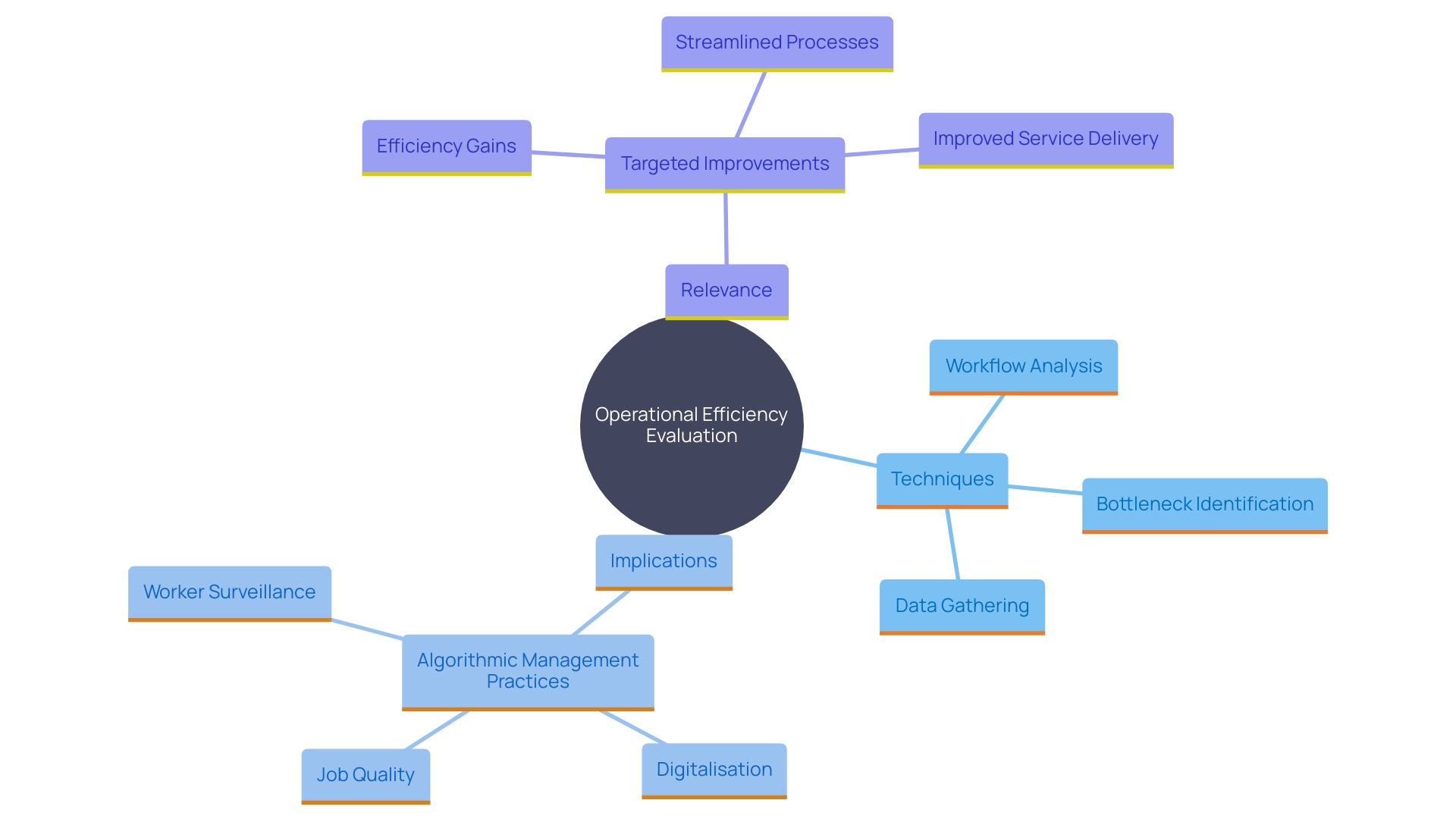
Step 2: Set Clear Goals and Objectives
Establishing specific, measurable, achievable, relevant, and time-bound (SMART) goals is essential for enhancing operational efficiency. These clearly defined objectives serve as a roadmap for both employees and organizations, driving motivation and productivity. Statistics indicate that only 3% of adults set clear, measurable goals; however, their success rate is ten times higher compared to those who do not. More than 70% of people who send weekly updates to a friend report greater success in achieving their goals, highlighting the importance of regular tracking and sharing of progress.
Involve stakeholders in this goal-setting process to ensure alignment and buy-in across the organization. Regular reviews are crucial for continual learning and improvement. By examining business metrics and operational data, organizations can make informed, data-driven decisions. For instance, implementing data visualization tools can significantly enhance the ability to monitor business effectiveness.
The OKR (Objectives and Key Results) approach, initially popularized in the tech industry, has become a cornerstone in various sectors due to its focus on defining clear, measurable, and achievable goals. OKRs help teams envision success and map out practical pathways to attain it through specific, quantifiable outcomes and regular progress reviews. This fosters a culture of accountability and adaptability, which is particularly vital in today’s fast-paced business environment.
Case studies have demonstrated that companies that consistently evaluate and modify their objectives based on measurement indicators remain competitive and efficient. For example, in the hospitality sector, automating back-office procedures has shown to lower expenses and environmental impact, enhancing operational performance.
In summary, SMART goals and regular performance reviews are foundational to operational efficiency. Leveraging data, engaging stakeholders, and adopting proven methodologies like OKRs can lead to significant improvements and sustained business success.

Step 3: Identify and Streamline Processes
By outlining essential procedures within your organization, you can identify areas ripe for streamlining. Begin by developing a flowchart to illustrate the order of steps, decisions, and activities involved. This visual representation helps highlight redundancies and unnecessary steps that can be eliminated. For instance, AT&T’s long-standing history led to the accumulation of outdated systems and policies, frustrating employees and stifling efficiency. Similarly, IBL, with its entrepreneurial spirit, recognized the need to balance their innovation portfolio to navigate fluctuating market conditions effectively.
Utilizing process intelligence can further refine your approach by analyzing data to uncover bottlenecks and predict potential issues. This was evident in Intuit’s strategic restructuring, where they laid off 1,800 employees to focus on AI and customer-facing roles, ultimately streamlining operations to drive growth.
Focus on simplifying workflows to enhance productivity and reduce waste. By doing so, you align with the best practices in Business Process Management, leveraging both metrics and human factors to enhance effectiveness.
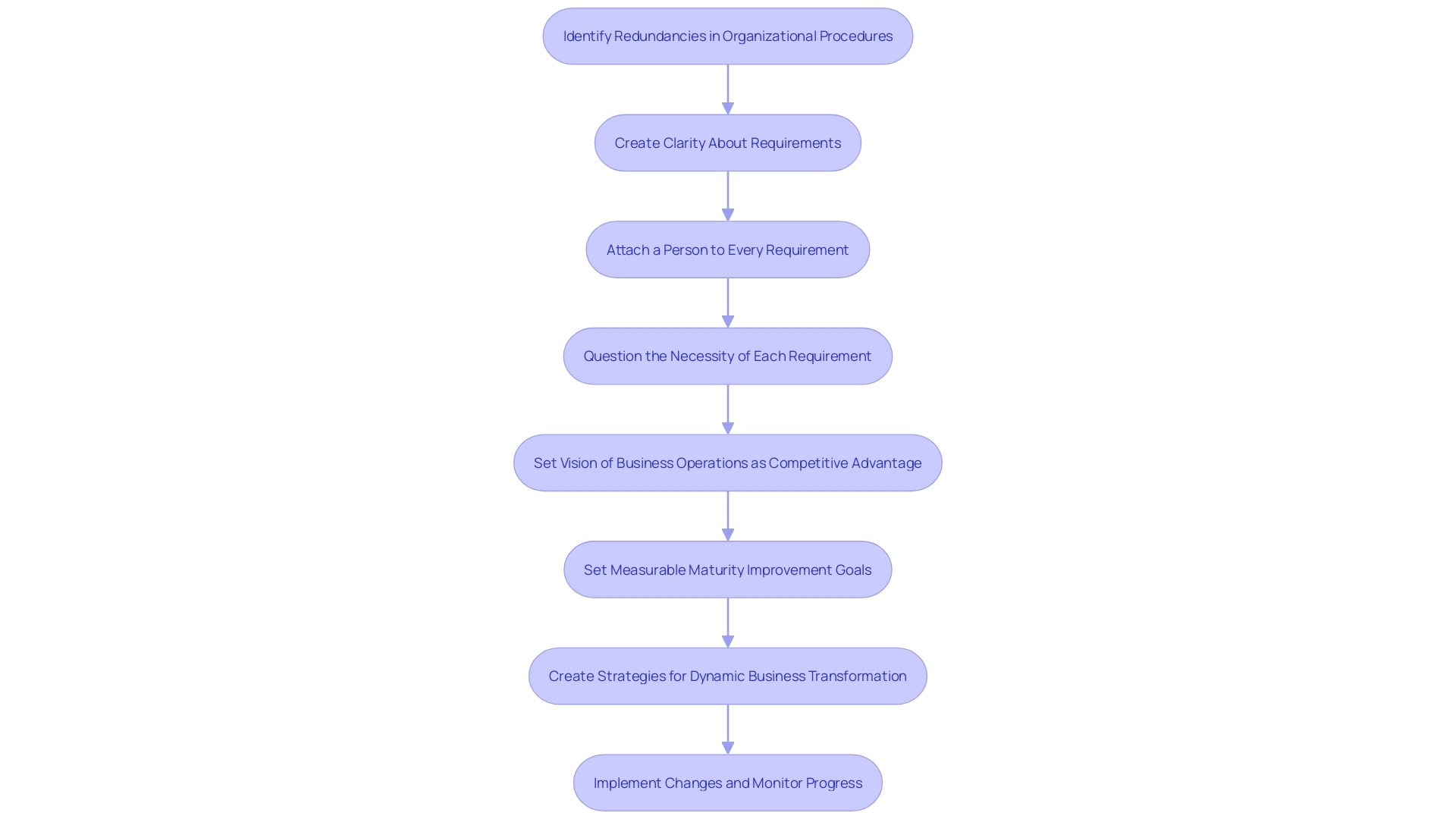
Step 4: Implement Automation and Technology Integration
Utilizing automation can significantly improve operational effectiveness and drive advancements in business performance. Identifying repetitive tasks that can be automated is a crucial first step. For instance, RobosizeME's collaboration with Louvre Hotels Group illustrates the power of automation in streamlining operations. By automating rate code maintenance, Louvre Hotels saved 574 hours each month, demonstrating significant improvements in productivity.
Adopting automation technologies can also reduce manual errors and free up valuable employee time. Guide Engineering, a leader in designing high-end automation equipment, attributes its success to continuous innovation and technological leadership. This approach has enabled them to grow and serve diverse markets effectively.
'As stated by the International Society of Automation (ISA), automation enhances supply chain resiliency, energy conservation, and cybersecurity.'. ISA emphasizes the need for skilled professionals to implement these technologies, underscoring the importance of education and training in the field.
As noted by Automation.com, staying informed about the latest developments in automation is essential. The ongoing advancements in AI and machine learning further expand the potential of automation to enhance business processes and operational performance. Embracing these technologies can lead to significant time and cost savings, positioning organizations for long-term success.
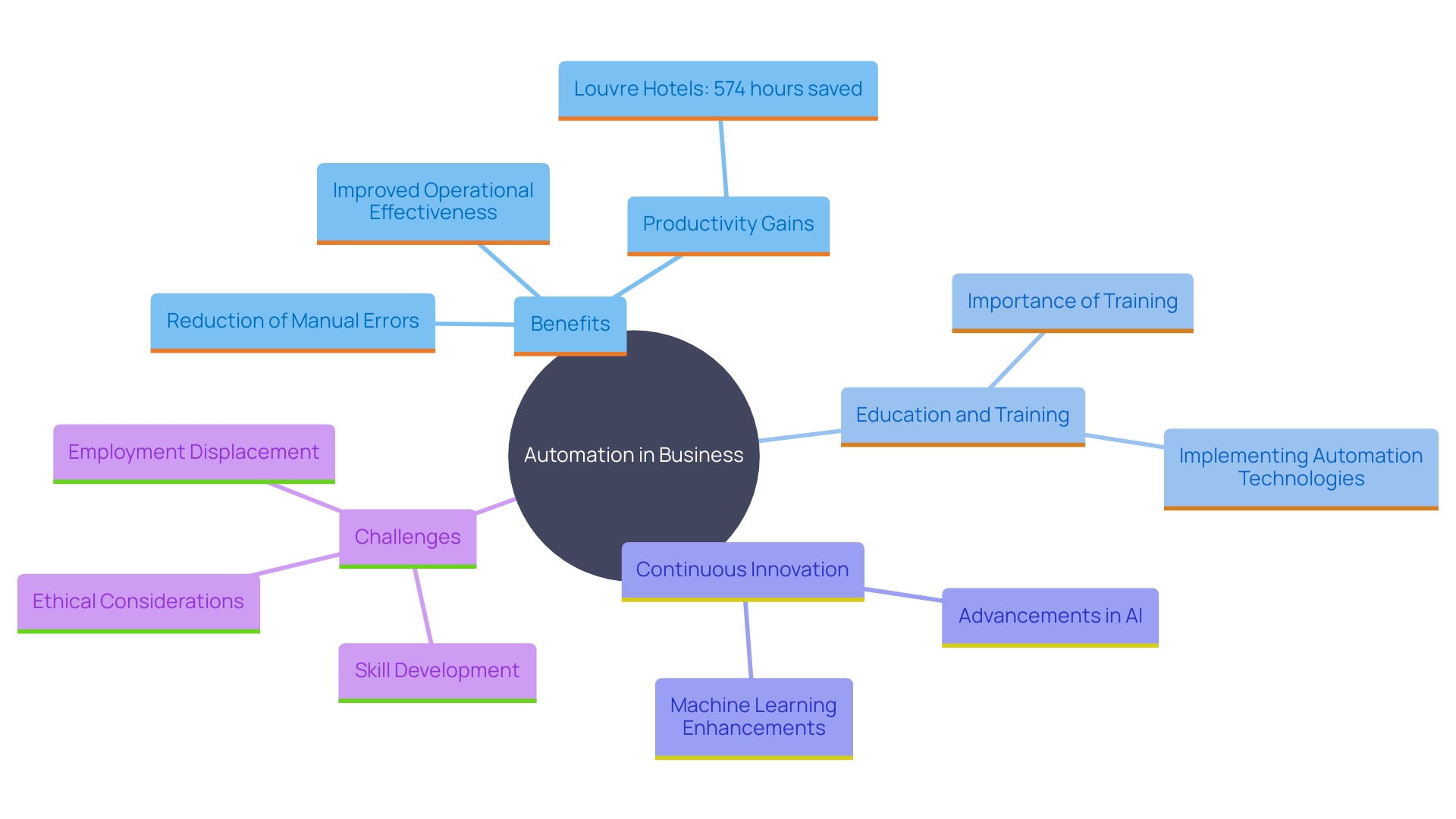
Step 5: Leverage Data and Analytics
'Utilizing data analytics is crucial in fostering informed decision-making and enhancing operational performance.'. By exploring measurement indicators, organizations can pinpoint trends, track productivity, and identify areas ready for enhancement. This approach is not just theoretical but has been practically demonstrated by companies like Bosch. Bosch's development of the solid oxide fuel cell (SOFC) system showcases how data analytics can optimize energy production and sustainability efforts. The SOFC's digital twin enables tracking of operational parameters to improve cost and performance.
Such data-driven insights enable prioritization of initiatives, ensuring continuous optimization. For instance, Intuit's strategic pivot towards artificial intelligence, laying off 1,800 employees to rehire in new AI and customer roles, underscores the importance of reallocating resources based on data analytics to drive growth and efficiency. As Tariq Shaukat of Sonar notes, embracing generative AI and analytics can significantly boost productivity and innovation, which is essential for any forward-thinking organization.
Furthermore, the extensive accessibility of large data sets today, in contrast to a hundred years ago, offers unmatched prospects for companies to improve decision-making methods. By incorporating these insights, organizations can transform data into a competitive advantage, as emphasized by Rex Ahlstrom of Syniti. Thus, incorporating data analytics as a crucial element of the decision-making framework is not only advantageous but essential for sustaining a competitive advantage in today's swiftly changing environment.
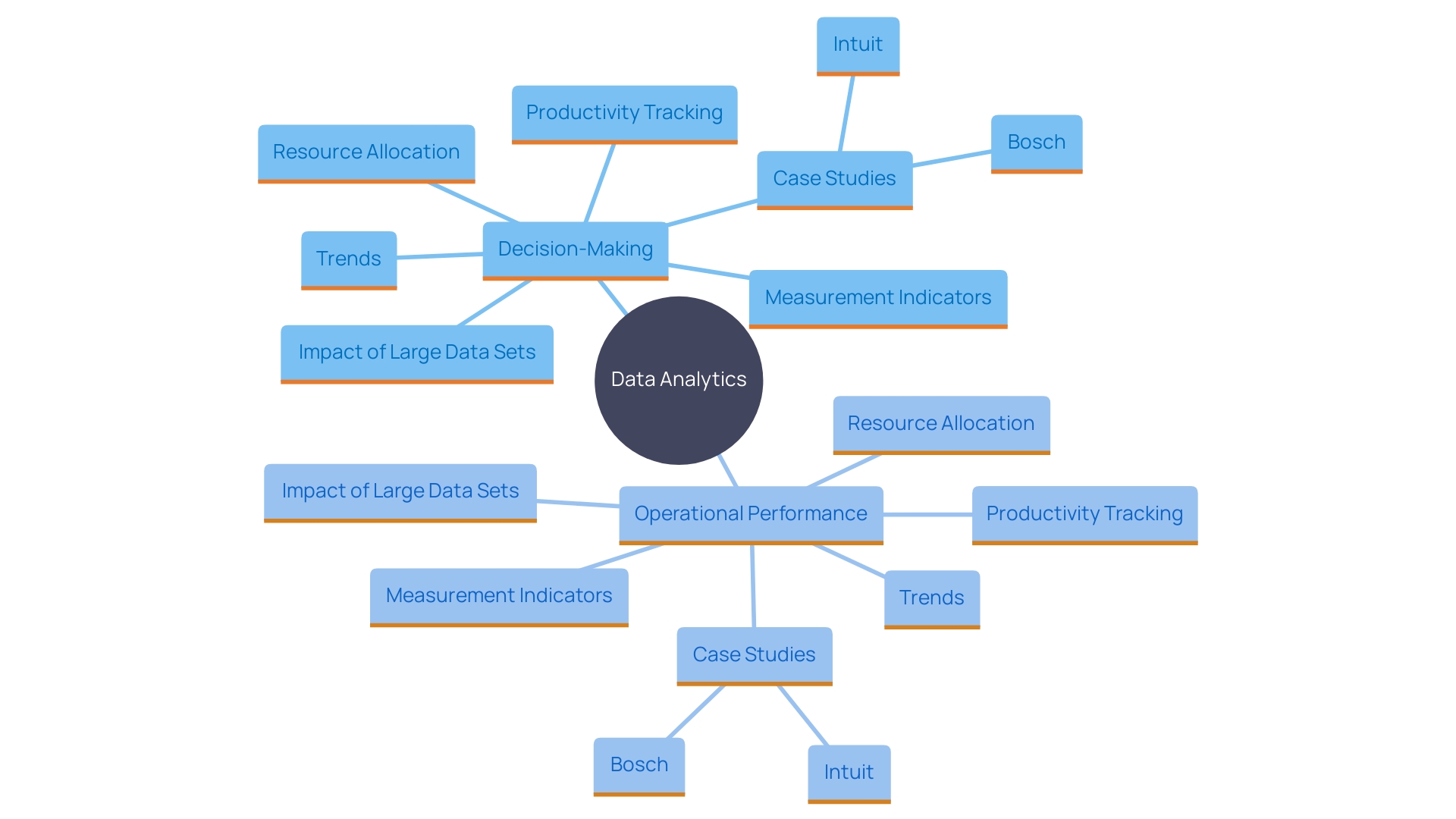
Step 6: Invest in Employee Training and Development
Equipping employees with the necessary skills and knowledge is vital for optimizing operational efficiency. Introducing training initiatives that focus on system enhancement, technology application, and optimal practices can greatly boost productivity. For example, Nets, a digital payment solutions provider, revamped their onboarding process, leading to significant advancements. Training helps businesses achieve more productive and profitable operations and fosters a satisfied workforce, which is crucial in today's competitive market. It also helps in retaining high-quality employees and fostering a culture of ongoing enhancement, resulting in better customer service and increased profitability. Moreover, as demonstrated in the case of Wallace-Woodworth, formal training programs can preserve crucial knowledge, ensuring operational continuity even when staff changes occur.
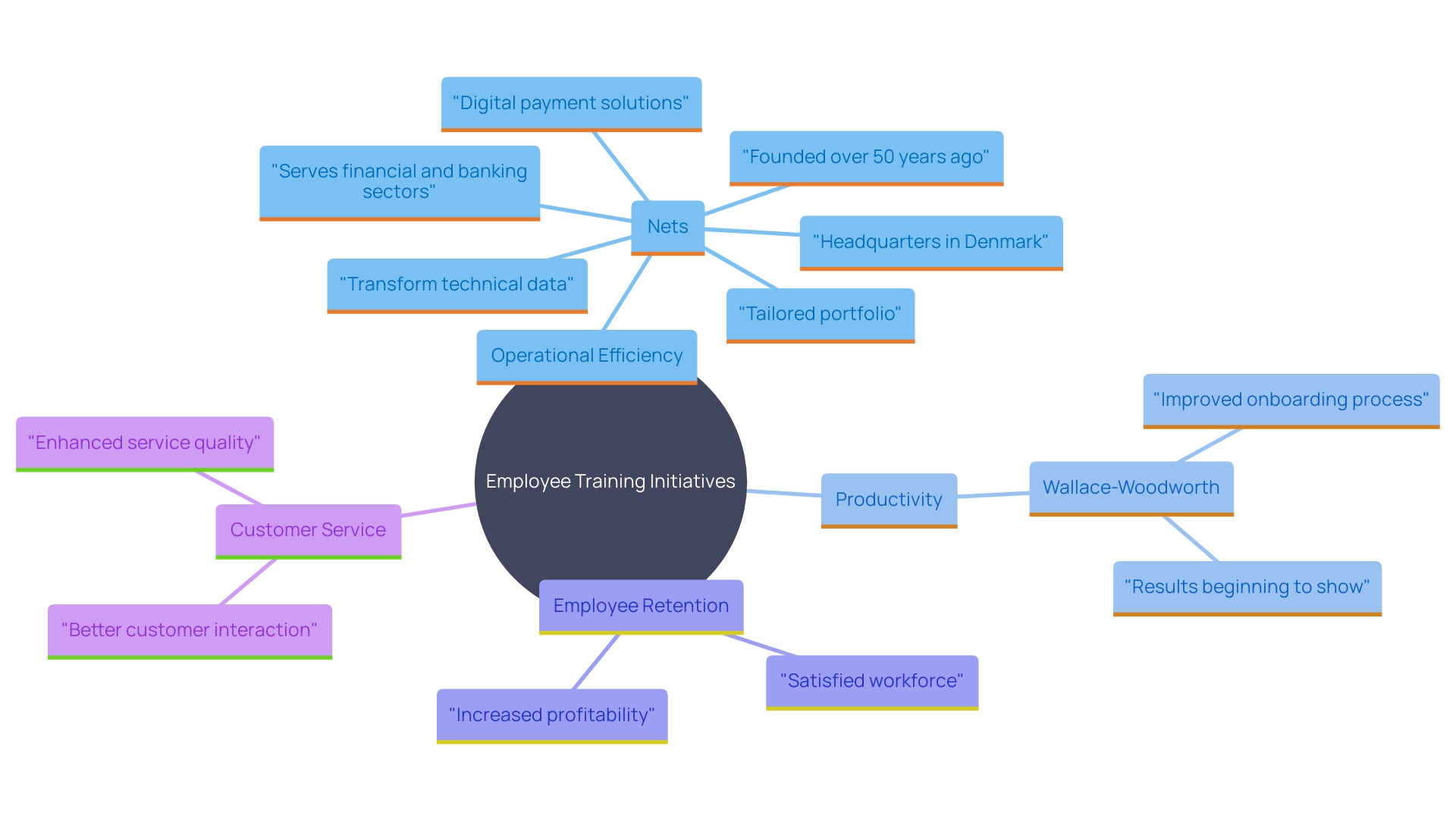
Step 7: Foster a Culture of Continuous Improvement
Creating a corporate environment that emphasizes ongoing advancement is essential. Encourage open communication channels and actively seek feedback from employees. Recognize and reward those who identify and address inefficiencies. This approach not only encourages innovation but also improves operational efficiency.
A study by Bryan Solis highlights that 51% of businesses attribute their need for change to market competition and growth opportunities. Additionally, thriving teams have been shown to boost creativity and productivity, making it essential to build a motivating work environment. Implementing a feedback mechanism, as described in Control Theory, can effectively manage dynamic systems by adapting to changes in real time.
Moreover, organizations must address cultural shortcomings that disproportionately affect certain groups. For example, toxic cultures have been shown to drive women out of the workforce, emphasizing the need for inclusivity and respect. Leaders should revisit their strategic intentions, ensuring alignment with the organization's mission and vision, and translating this vision into actionable plans.
By concentrating on ongoing enhancement and utilizing feedback, organizations can stay competitive and nurture a culture of innovation and productivity.

Step 8: Optimize Resource Management
To enhance your organization's efficiency, it's crucial to evaluate and streamline resource allocation. Aligning human, financial, and material resources with operational goals ensures productivity and cost-effectiveness. For example, Travel Charme Strandhotel Bansin, a popular hotel in Germany, optimized their operations by implementing technology to improve service delivery. The hotel's general manager, Greg Smlatic, highlighted the seamless integration of Shiji’s point-of-sale system, Infrasys, selected by Travel Charme’s corporate team. This strategic decision not only enhanced the hotel's service quality but also ensured the right resources were available during peak times, such as vacation periods when guest demand is at its highest. By adopting such targeted approaches, organizations can reduce costs and enhance service delivery, ensuring resources are utilized effectively.
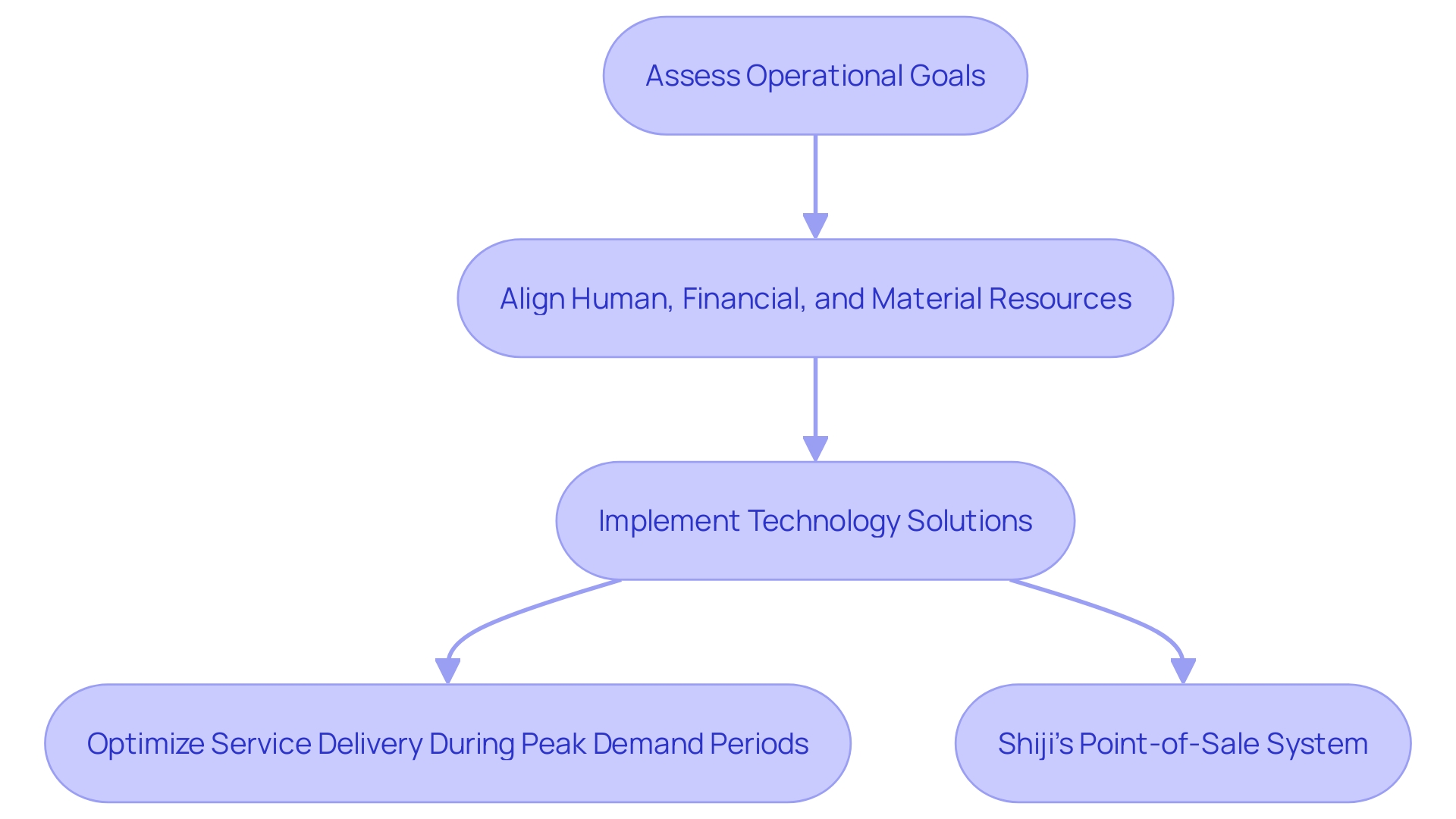
Step 9: Monitor Performance and Adjust
Establishing a strong performance monitoring system is essential for attaining operational effectiveness and enhancing business performance. Start by identifying meaningful Key Performance Indicators (KPIs) that align with your efficiency goals. Regularly reviewing these KPIs allows for data-driven insights, enabling better decision-making. According to business specialists, KPIs are crucial for monitoring advancement towards goals and pinpointing areas for enhancement.
Adaptability is essential; be ready to adjust strategies based on results. The Baldrige Program for Excellence emphasizes the significance of merging quality enhancement with management of results to steer decision-making efficiently. This method not only assesses effectiveness but also aids in ongoing development.
Real-world examples, like ERA Group, demonstrate the value of investing in people, tools, and technology to drive business health and growth. By nurturing a culture of ongoing development and leveraging KPIs, organizations can navigate challenges and seize opportunities for sustainable success.
To remain competitive and attain sustainable growth, adopt a thorough evaluation management framework that emphasizes both assessment and enhancement. This dual approach ensures that you not only track performance but also foster an environment that supports transformative change.
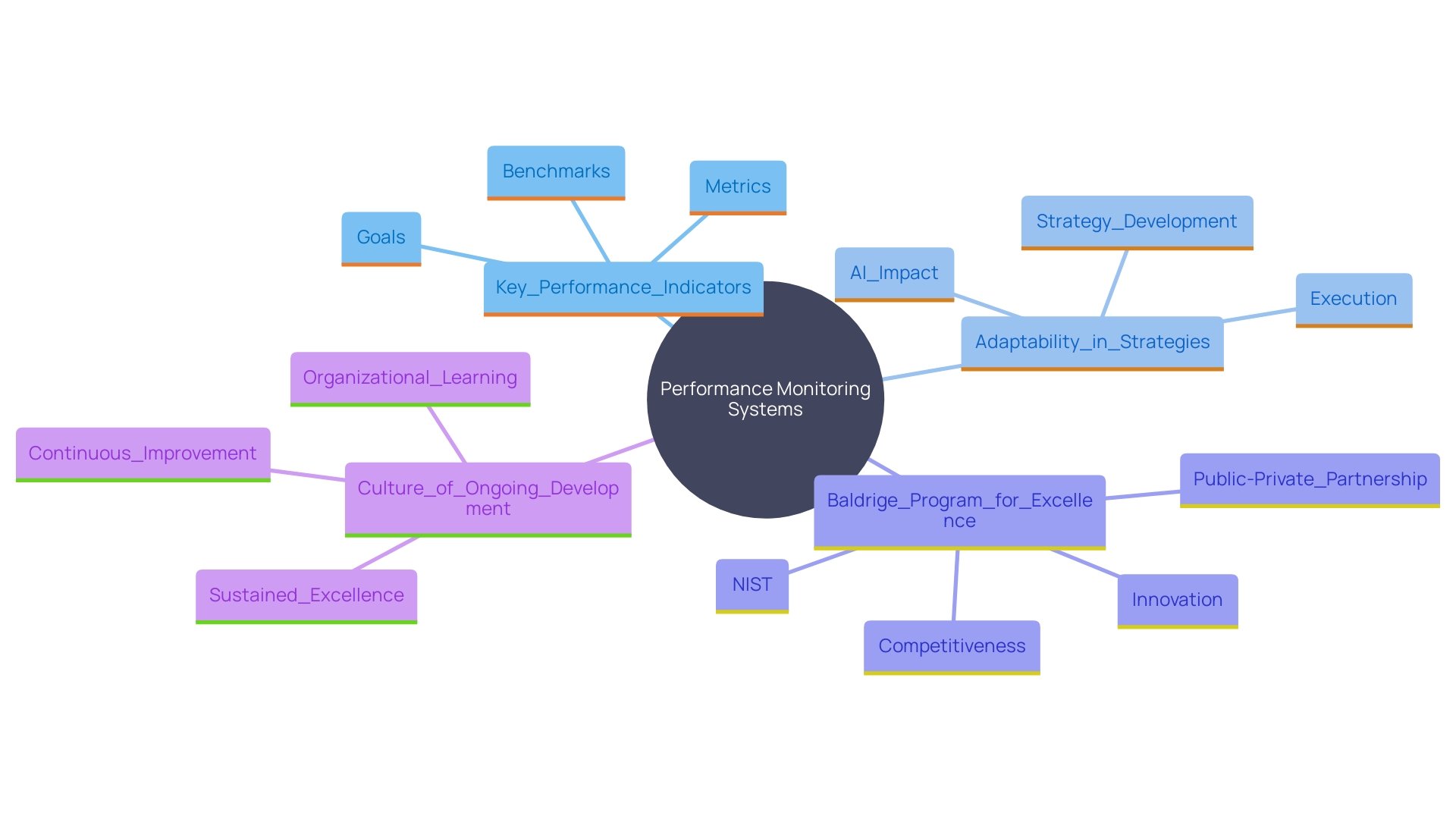
Step 10: Document and Review Processes
Meticulously record all procedures and any alterations made during your efficiency enhancement initiatives. Regularly reviewing and updating this documentation ensures it remains current and reflective of actual practices. Detailed process documentation serves multiple purposes: it maintains consistent quality across operations, reduces ambiguity for employees, and ensures everyone, regardless of department, understands the procedures to achieve optimal results. Moreover, it becomes a crucial resource for onboarding new employees, providing them with clear guidelines and training materials to quickly acclimate to their roles. As Emma Davies, Department Coordinator at the Faculty of Engineering and Design, highlights, comprehensive documentation can facilitate smoother transitions and consistent adherence to established protocols.
Conclusion
Enhancing operational efficiency is not merely a goal; it is a strategic imperative for organizations aiming to thrive in today's competitive landscape. By systematically assessing current workflows, setting clear objectives, and streamlining processes, organizations can lay a solid foundation for sustainable growth. Each step, from implementing automation technologies to fostering a culture of continuous improvement, contributes to a comprehensive strategy that drives operational excellence.
The integration of data analytics and employee training further amplifies these efforts, allowing organizations to make informed decisions and equip their workforce with the skills necessary to adapt to changing demands. The emphasis on monitoring performance and adjusting strategies ensures that organizations remain agile and responsive to market dynamics, ultimately positioning them for long-term success.
By committing to these ten strategic steps, organizations can unlock significant efficiency gains, improve service delivery, and enhance overall performance. This approach not only strengthens the operational backbone of the organization but also cultivates a proactive culture that embraces innovation and continuous improvement. In an era where efficiency translates directly to competitive advantage, taking decisive action in these areas is essential for any forward-thinking organization.




